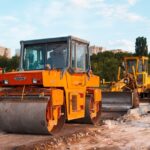Selecting the best brake system for a trailer matters for safety, performance, and long-term use. Every trailer, whether you tow a caravan for a weekend trip, move a boat near the coast, or pull work gear across outback, brakes give control for safe stops. Conditions in Australia change, from busy roads to unsealed bush tracks, so it’s important to compare electric brakes to hydraulic brakes before choosing. Each system has its strengths and meets specific needs. Your final pick affects trailer movement, service tasks, and how simple repairs might be later. Knowing about the trailer’s brake types also helps when buying backup trailer brake parts if replacements are needed. In this article, you see the main changes between electric and hydraulic brakes and how to match features to your towing needs.

How Do Electric Trailer Brakes Work?
Electric brakes come standard on trailers in Australia, especially for caravans or medium-weight loads. They use electric signals from your tow vehicle, sent through a brake controller fixed inside your dashboard. Step on the brake, and the controller delivers electrical current to strong electromagnets joined in the brake drums. Once the magnet gets power, it pulls parts together, making friction and slowing the spinning wheels. A big advantage is how much you can adjust these brakes. Drivers set the brake force with in-car controls, fine-tuning for different trailer weight. This fixable feature makes electric brakes popular for holidays or light-duty commercial trailers. Electric setups are easier and faster for mechanics to mount and fix, too. Spare parts fit easily, and nearly every Australian garage services these systems.
How Hydraulic Brake Systems Work
Some call them surge brakes, but hydraulic brakes use fluid pressure, not electricity. An electrical link from the tow vehicle is not needed. Hydraulic setups use a master cylinder in the trailer hitch (coupling). When the tow car slows, the trailer pushes forward, which squeezes the cylinder and sends hydraulic pressure to brake lines. Pressure then moves to every wheel cylinder and pushes the pads or shoes onto rotors or drums. Hydraulic action delivers even and gradual stops. You often see boat trailers with hydraulic brakes, because the sealed design stops water from coming in. Hydraulic units work by sensing trailer movement automatically, making stops without driver adjusting. Maintenance takes more effort: owners must check fluid levels, watch for leaks, and bleed the brake lines to remove air. When repairs are needed, fixing hydraulic parts takes extra steps compared to electric sets.
Control and Performance in Different Situations
Where you drive often decides what type you want. In city or on good roads, electric brakes offer reliable stops and quick response. You can tweak the pressure by using the road type and how heavy the trailer is, which is helpful for campers on unstable roads in Victoria or NSW. Driving a trailer in rough, off-road areas or bringing it into water, hydraulic brake systems may fit your needs best. Boat trailers carrying loads up and down Queensland’s shore or gear haulers crossing dirt tracks often go with hydraulic setups for better water and dust resistance. For salty conditions, every metal part needs corrosion-proof qualities and the system needs more service checks to prevent damage.
Setting Up, Looking After, and the Cost
Putting electric brakes on is easy for most mechanics. They wire the trailer to a brake pad controller and fit magnets without big effort. Hydraulic units, on the other hand, want careful connection of brake pipes, adding fluid, bleeding for air, and checking for leaks, so service jobs take more time and likely cost more. Electric brakes need less work once installed. Since you don’t use hydraulic fluid, fewer points can fail. Changing out magnets, shoes, or drums is quick, and error codes from controllers help with fixing any problem without delay. You won’t see hydraulic brake issues like air in the lines or old fluid, so repairs go faster and with less guesswork.

Legal Rules and System Suitability in Australia
Current laws in Australia list the brake systems by trailer size. For a gross trailer mass (GTM) above 750 kg, you must have brakes, and once the limit is past 2,000 kg GTM, a breakaway system needs to be included that pulls the brakes if the trailer disconnects. Electric brakes link with breakaway kits for legal towing, helping meet every road rule in Australia. Compatibility is also essential. You must add a brake controller into your car for electric brakes to work. Plenty of new towing vehicles come prepared for this part, but those who switch from hydraulic to electric brakes should check before updating. If you want no extra parts changed on the car, hydraulic systems suit those needs—just couple the trailer and go.
















